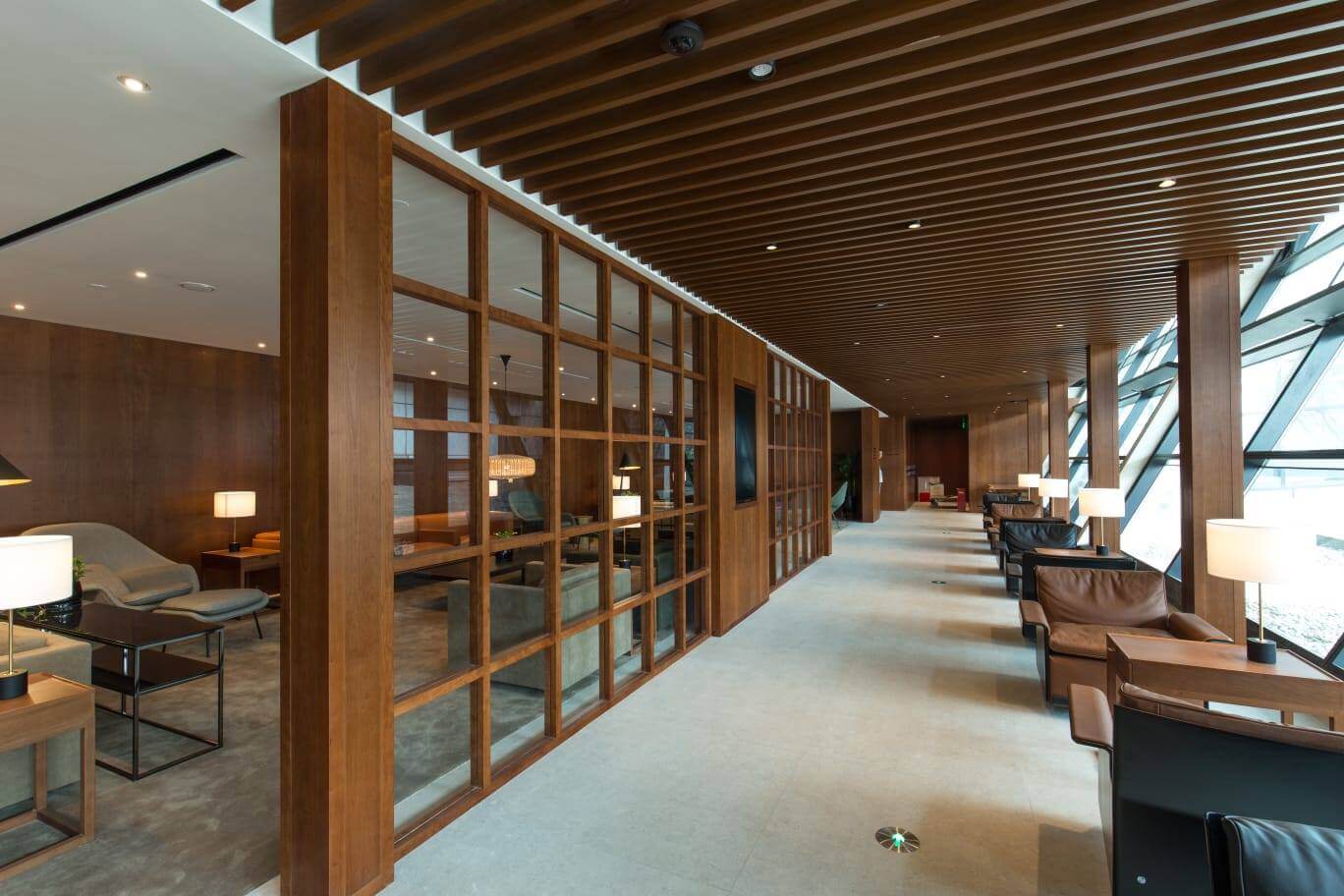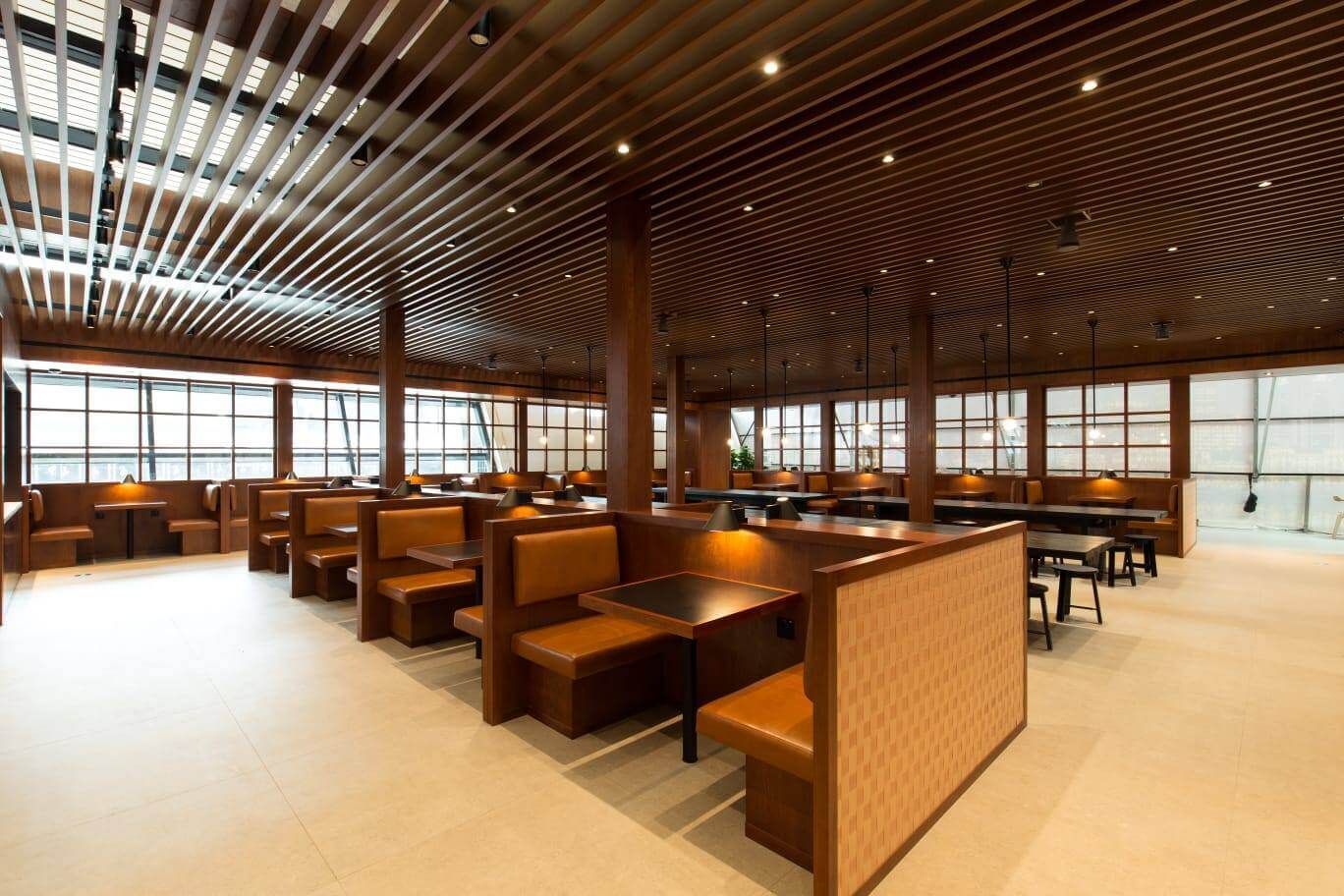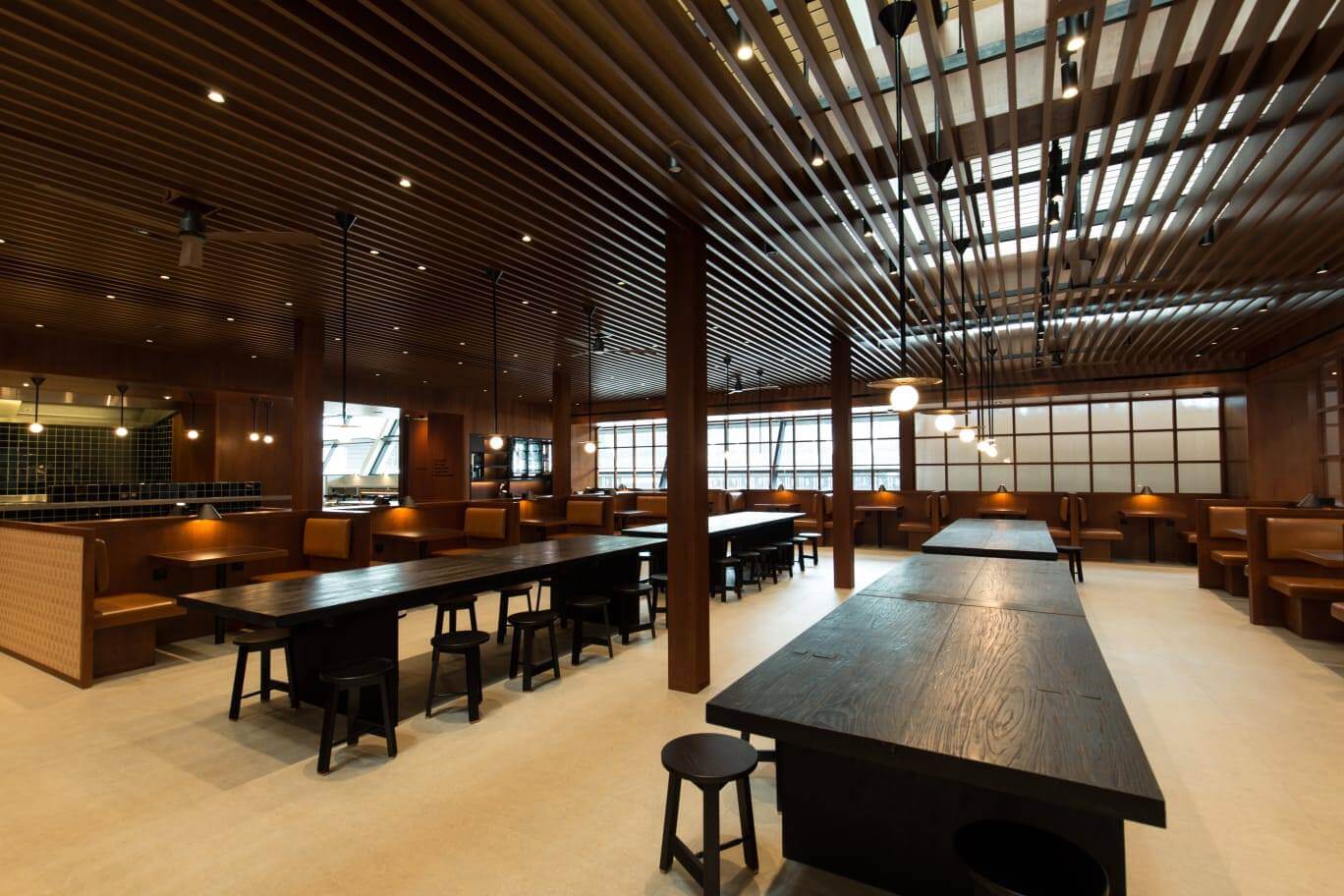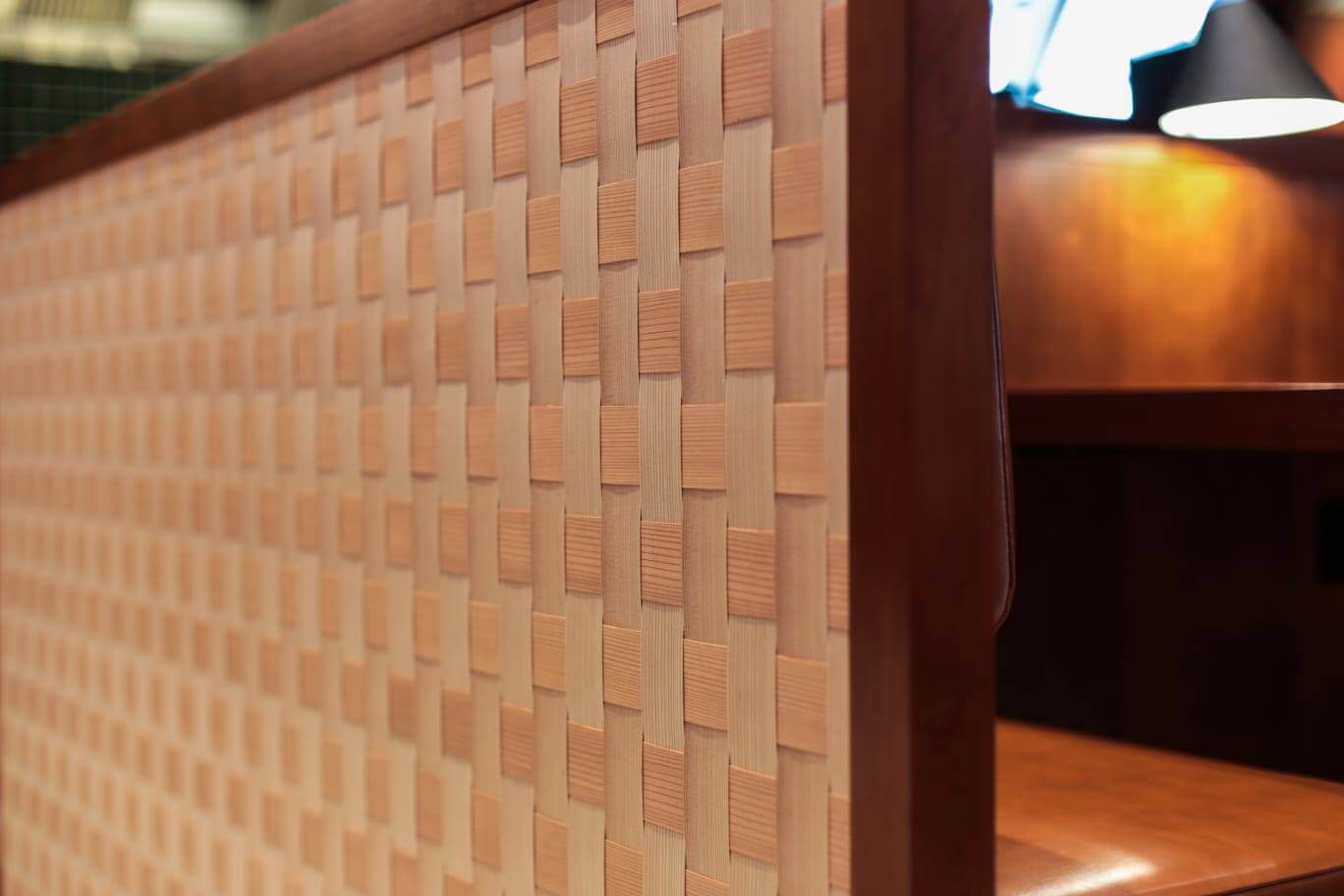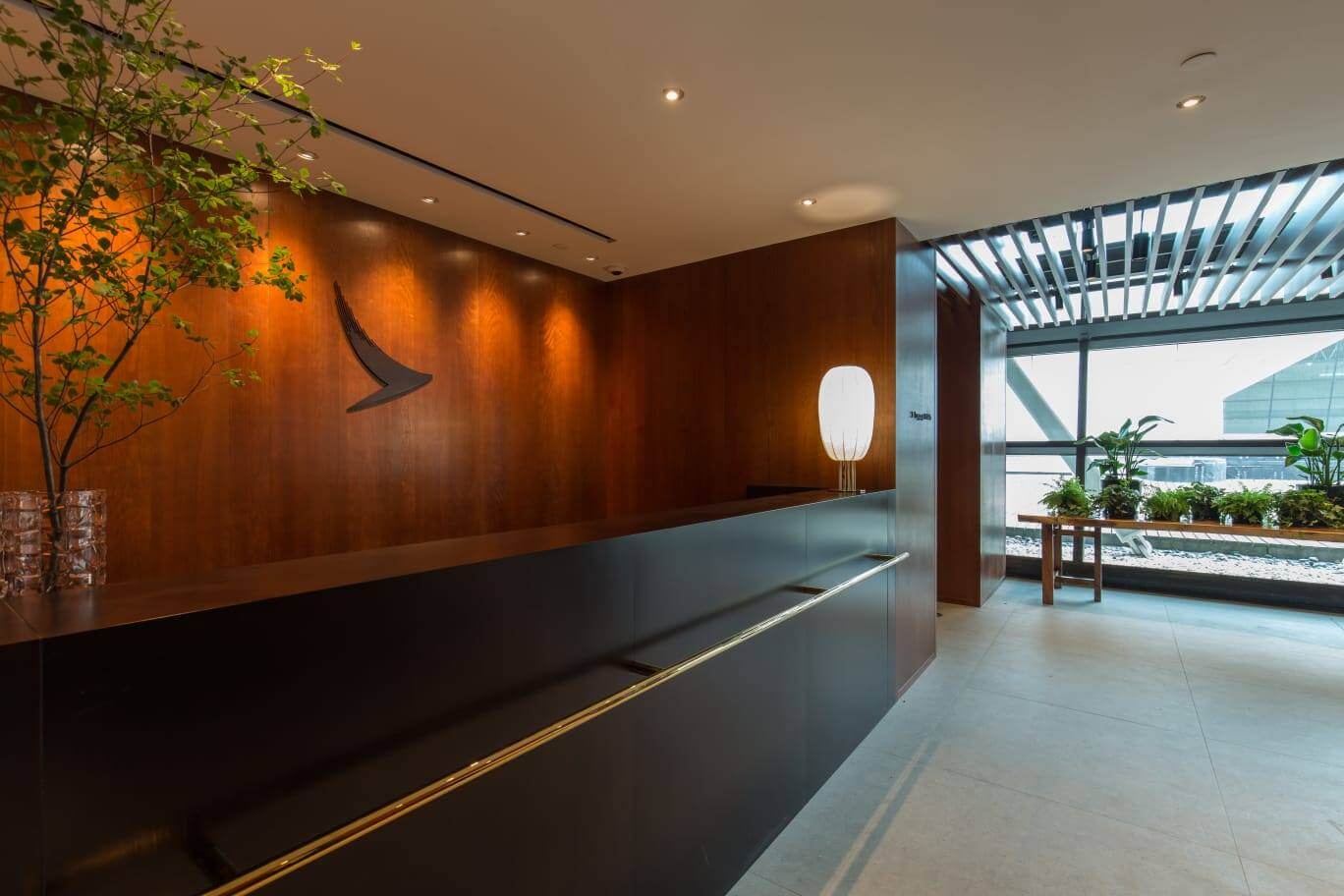
Steered by user-centric design, luxury gets functional at this Shanghai Pudong Airport VIP lounge
By navigating Cathay Pacific’s Pudong Airport VIP lounge update through a UX/UI approach, Loftwork Hong Kong located the middle-ground between luxury and high-capacity comfort.
For one of Loftwork Hong Kong’s biggest projects in space design yet, the most transformative touches are found not in fancy fittings, but in a remapping of the space itself.
For this project – a facelift for a ten-year-old Cathay Pacific VIP airport lounge – Loftwork was up against one of the world’s busiest airports and most congested airspaces: Shanghai Pudong International Airport. While this gigantic flow of traffic may not have been physically felt for Loftwork HK co-founder Harvey Chung, who flew in and out of the airport for the project a handful of times, the figures show a more staggering reality.
“When we did the research, of course it was different,” says Chung.
High Time for a Design Fix

74 million passengers moved through Shanghai Pudong International Airport in 2018, putting it in the top ten of the world’s busiest airports (and second in China, after Beijing). With the opening of the world’s largest satellite terminal building in September, 2019, Pudong is projected to take on an annual passenger capacity of 80 million. It doesn’t help that Pudong tracks poorly for punctuality; statistics show an on-time rating of only 52 percent and flight delays averaging 48 minutes.
“One of the things we found was that the usage of the lounge is kind of different from other VIP lounges,” Chung explains. “We spent time researching who might be the user, and found out that a lot of people were delayed and stuck at the lounge.”
As he puts it matter-of-factly, it’s ‘a busy VIP lounge’. “Basically, it’s always full, so it’s not really the kind of relaxing environment, as people want a VIP lounge to be.”
Busyness became the focal point for Chung and his team – or specifically, maintaining an atmosphere of luxury and comfort, in this contradictory environment. To do so, according to Chung, is all through effective space planning – and zoning: “You can’t really spread out the density, so you have to strategically group people in one spot – the spot that’s the busy part of it.”
Chung and his team spent a lot of time studying the ways to group people together, and created specifically intended spaces within the lounge. There’s a lounge area, a terrace/balcony and, as Chung says, “one major focus where we put all the density – the Pavilion.”

A food hall/noodle bar, the Pavilion is located in the center of the lounge. With the other spaces designed around it, it mitigates a ‘dead-end situation’ – something Chung says architects and designers are always eager to avoid.
“We try to keep a human circulation; it’s always continuous, so you don’t go to a dead-end and have to walk your way back.” Chung explains. “It’s circulating around the center; when you go outside the Pavilion, you go to the balcony area, and then another mezzanine area, and so on.”
“If it’s a continuous circulation, you don’t repeat your experiences as much.”
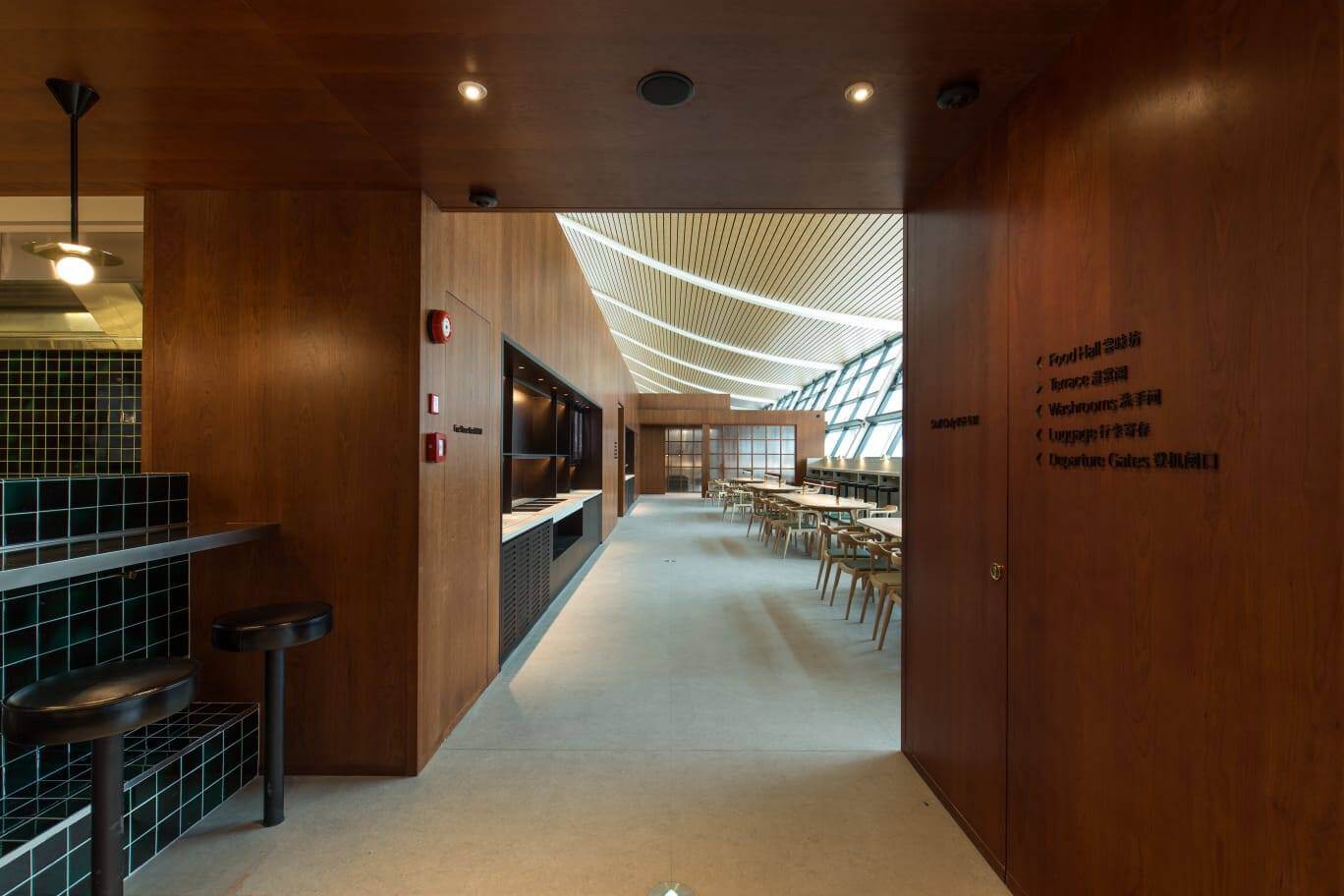
A UX/UI-Space Design Codeshare
It was a refreshing change for Harvey Chung to be designing a space in such a way – with the user experience at the forefront. By bringing in a UX framework –traditionally reserved for digital spaces– Loftwork HK was able to design around those who are using the space, why they are using it and how they can better use it.
“This is something not a lot of people are focusing on in space design,” says Chung, whose background is in architecture. “A lot of the time, architects and interior designers look at the context – the environment – but sometimes they’re not really focused on the user.”
“So, in terms of innovation, we have to understand both sides – the context and the user, and meet in the middle for the sweet spot. That’s where the innovation comes in, in my point of view.”

In the way that Chung envisions it, if the UX is the spatial planning component, then the UI is the materials and the details – something that should also not be overlooked. For clients with a firm brand identity like Cathay Pacific, there is less room to pilot the ‘UI’ of the space freely. Chung and the team were given an existing material and color palette to work with – although, as he puts it, “that doesn’t mean we cannot be creative about it.”
“In a way, it’s actually good, because it saves a lot of time convincing the clients to use this or this material. We work with the materials we already have, and see how we can mix and match, and place it in a different way.”
Getting Clients on Board
Innovation does not just begin and end at designing the space. A big part of the creative process also involves communicating with clients, and convincing clients that out-of-the-box ideas work and are worth it. This is something Harvey Chung is certainly no stranger to.
In constructing the Pavilion, Chung and his team were met with technical challenges – but also unconvinced minds. Named as such in part because it literally is one, the Pavilion is a clever, semi-enclosed solution to a lounge that was previously open to air. As Chung says about the old site, “you don’t feel like you’re in the space; you’re just part of the airport.”

“We wanted to build something with a sense of enclosure; it makes you feel like you’re part of the airport but you’re also enclosed.”
However, with mounting fire safety restrictions, construction difficulties and budget constraints, one of the project’s biggest hurdles was conveying the vision to the Cathay Pacific team in a tangible way. Rather than relying on the drawn-out process of sending endless drawings and emails, the Loftwork HK team decided to make their own in-house virtual reality simulation, painting a clearer, more visceral view.
“After two weeks of back-and-forth, we were like: ‘Why don’t we just meet and I’ll just show you in the VR goggles?’ After two days, they were like, ‘let’s go ahead and do it.’”
“Basically, what we learned from this is, we should always do that just to convince the client.”
Final Thoughts
At more than 750 square meters, the Cathay Pacific VIP Lounge is a showcase in both functional design and a look into the innovative processes and ideas sparked by Loftwork HK. Rethinking space design as primarily a user experience, high comfort and luxurious appeal can also be achieved through effective space planning.
Photo credit: Albert Chun, Spaze Design
About Loftwork
Loftwork is a creative company dedicated to making a positive impact through design with a global community of innovators. Aside from providing innovative design solutions to global clients across various industries, Loftwork also operates a number of owned services and platforms, Learn more.




